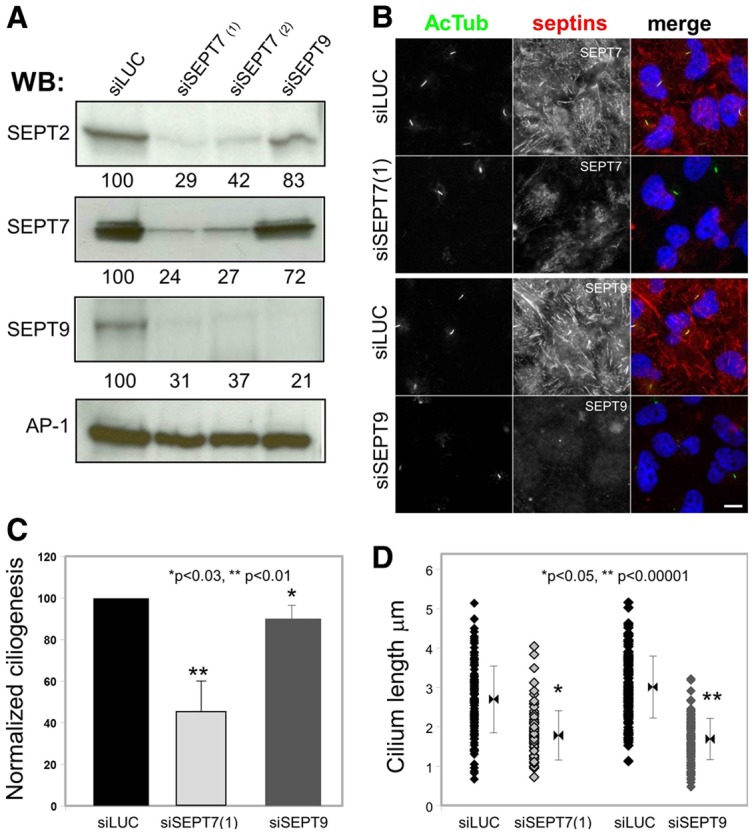Fig. 6.

Septins are required for ciliogenesis, and control cilium length. (A) RPE1 cells were treated with a control luciferase-targeting siRNA (siLUC), two different SEPT7-specific siRNA [siSEPT7(1) and siSEPT7(2)] or a SEPT9-specific siRNA (siSEPT9) were analyzed by western blotting using antibodies against the indicated septins and the γ-adaptin subunit of the AP-1 complex as a control. A quantification of the signal is shown below each panel. (B) RPE1 cells treated with siSEPT7(1), SEPT9 or luciferase targeting siRNA were analyzed by immunofluorescence using antibodies against SEPT7 or SEPT9 (red) and acetylated-tubulin (AcTub; green). (C) The ability of siRNA-treated cells to form primary cilia was analyzed by immunofluorescence from images obtained as in B. Results were quantified (i.e. cells with a single rod-like AcTub-positive structure), normalized to control cells in each experiments and expressed as normalized ciliogenesis. Statistical analysis was performed with the Student's t-test. (D) The length of cilia in siRNA-treated cells was measured (n = 50) and the length distribution is shown. Results are from three independent experiments. Statistical analysis was performed with the Fischer test. Scale bar: 5 µm.
